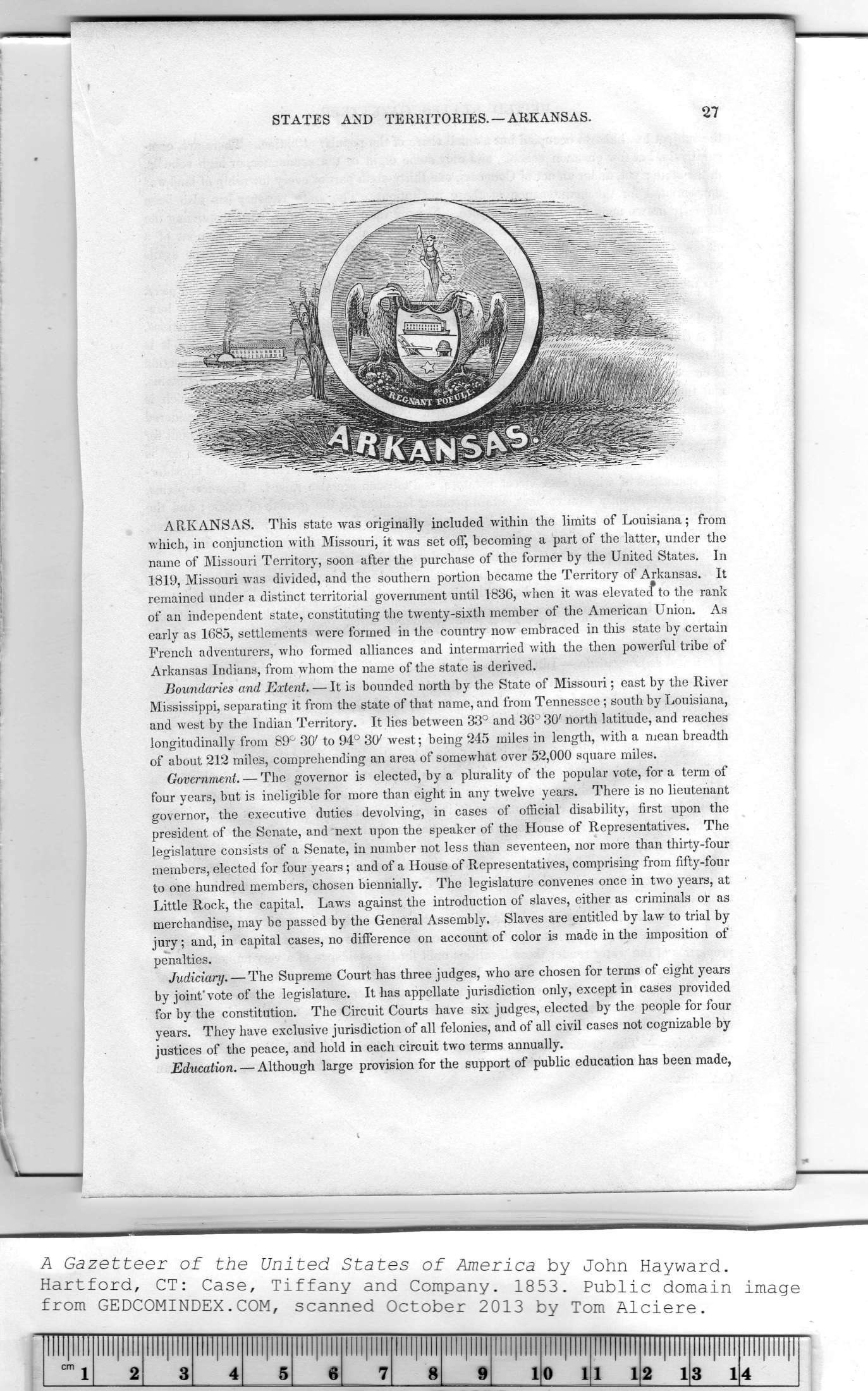|
|
Note: Ctrl and + increases the font size of the text below, Ctrl and - decreases it, and Ctrl and 0 resets it to default size.
STATES AND TERRITORIES. —ARKANSAS. 27
ARKANSAS. This state was originally included within the limits of Louisiana; from
which, in conjunction with Missouri, it was set off, becoming a part of the latter, under the
name of Missouri Territory, soon after the purchase of the former by the United States. In
1819, Missouri was divided, and the southern portion became the Territory of Arkansas. It
remained under a distinct territorial government until 1836, when it was elevated to the rank
of an independent state, constituting the twenty-sixth member of the American Union. As
early as 1685, settlements were formed in the country now embraced in this state by certain
French adventurers, who formed alliances and intermarried with the then powerful tribe of
Arkansas Indians, from whom the name of the state is derived.
Boundaries and Extent. — It is bounded north by the State of Missouri; east by the River
Mississippi, separating it from the state of that name, and from Tennessee; south by Louisiana,
and west by the Indian Territory. It lies between 33° and 36° 3ft north latitude, and reaches
longitudinally from 89° 3ft to 94° 30' west; being 245 miles in length, with a mean breadth
of about 212 miles, comprehending an area of somewhat over 52,000 square miles.
Government. — The governor is elected, by a plurality of the popular vote, for a term of
four years, but is ineligible for more than eight in any twelve years. There is no lieutenant
governor, the executive duties devolving, in cases of official disability, first upon the
president of the Senate, and next upon the speaker of the House of Representatives. The
legislature consists of a Senate, in number not less than seventeen, nor more than thirty-four
members, elected for four years ; and of a House of Representatives, comprising from fifty-four
to one hundred members, chosen biennially. The legislature convenes once in two years, at
Little Rock, the capital. Laws against the introduction of slaves, either as criminals or as
merchandise, may be passed by the General Assembly. Slaves are entitled by law to trial by
jury; and, in capital cases, no difference on account of color is made in the imposition of
penalties.
Judiciary. — The Supreme Court has three judges, who are chosen for terms of eight years
by joint'vote of the legislature. It has appellate jurisdiction only, except in cases provided
for by the constitution. The Circuit Courts have six judges, elected by the people for four
years. They have exclusive jurisdiction of all felonies, and of all civil cases not cognizable by
justices of the peace, and hold in each circuit two terms annually.
Education. — Although large provision for the support of public education has been made,
A Gazetteer of the United States of America by John Hayward.
artford, CT: Case, Tiffany and Company. 1853. Public domain
|
